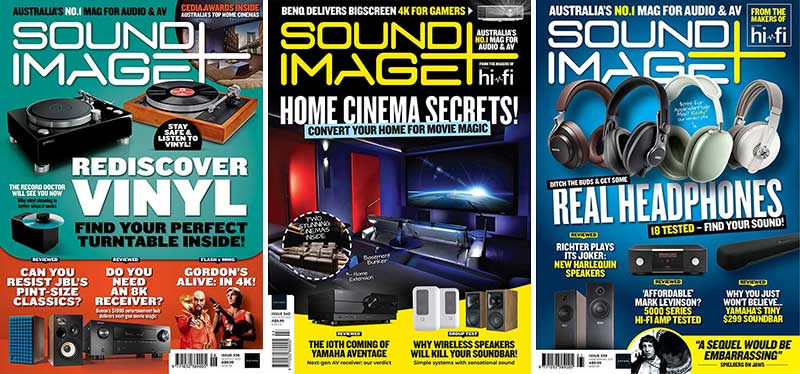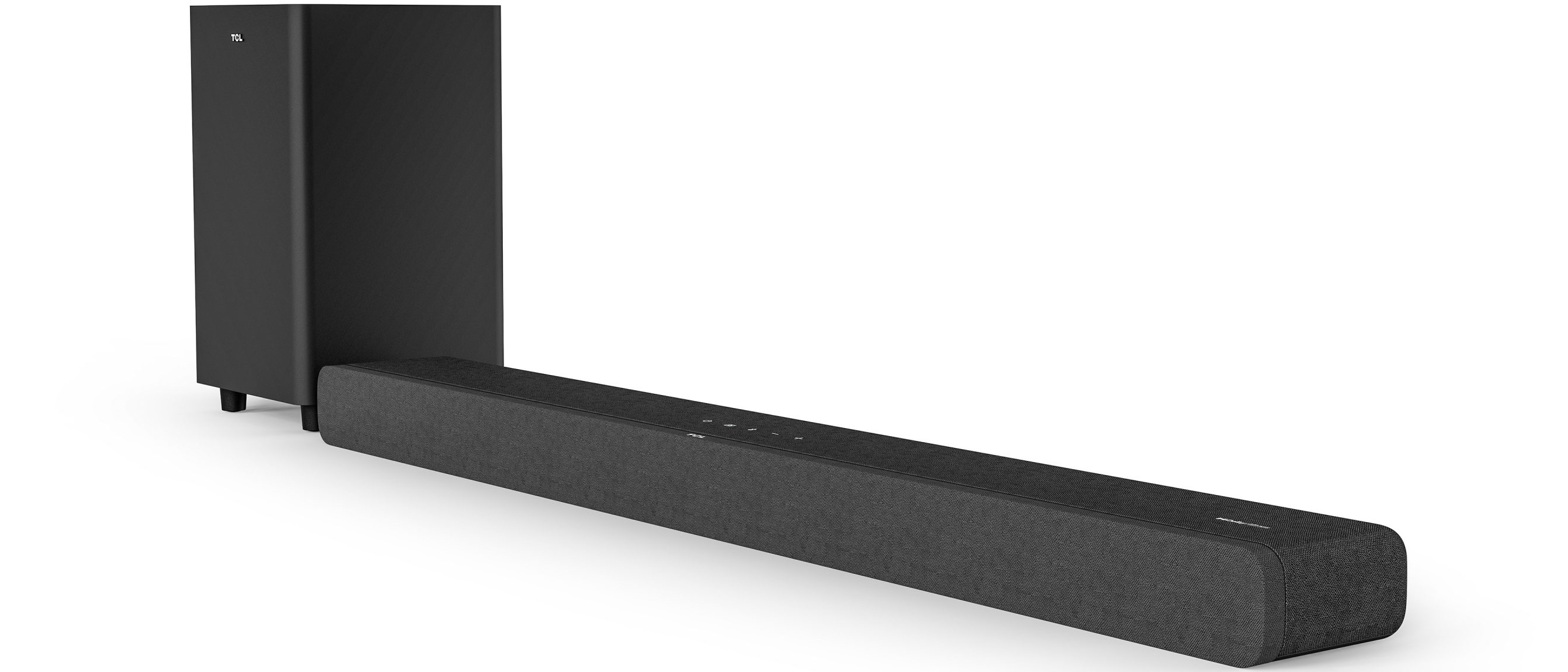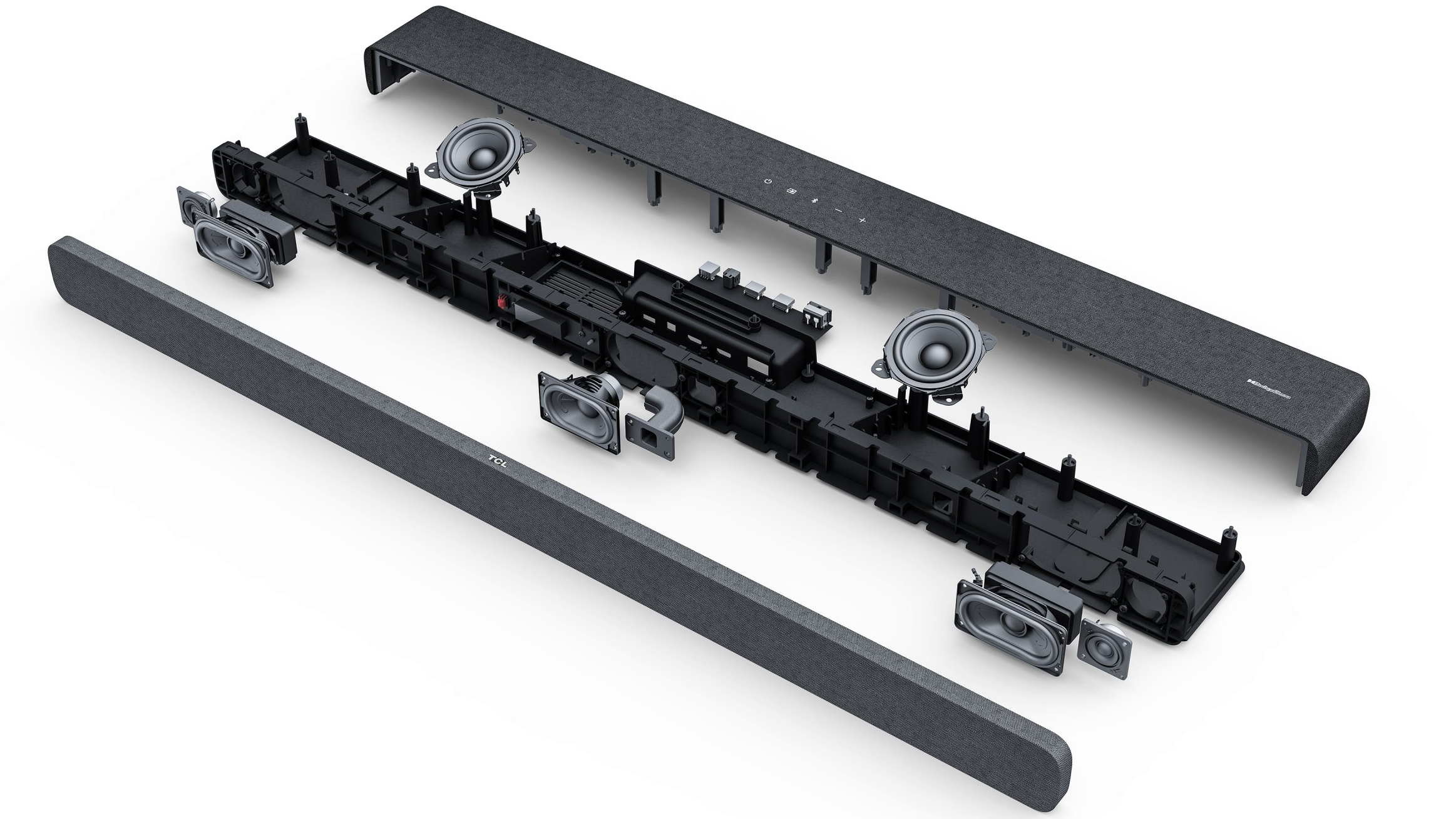Sound+Image Verdict
While you may have to play around with various modes and setting tweaks, the TS8132 delivers clear and wide audio for your home cinema, managing to do so at louder volumes than its price would suggest.
Pros
- +
Solid sound performance
- +
Subwoofer integrates well
- +
Useful music streaming
Cons
- -
Mode jumping required
- -
Some sync care required
Why you can trust What Hi-Fi?

This review originally appeared in Sound+Image magazine, one of What Hi-Fi?’s Australian sister publications. Click here for more information on Sound+Image, including digital editions and details on how you can subscribe.
TCL here promises a 3.1.2-channel soundbar and subwoofer package, where Atmos processing makes the combo capable of delivering genuine height information from upfiring drivers. And there’s pleasingly little apparent PR guff here: the channel count is genuine, TCL doesn’t make outrageous claims, and it has a good few useful extras given the street price of £279 / $299 / AU$499. It can, for example, be linked with Google Home and thereby stream music via Chromecast. It can be set up as an AirPlay speaker and stream from Apple devices that way. And there’s Bluetooth.
So in these ways it’s offering to double up as a system for your music, as well as fulfilling the fundamental soundbar purpose of delivering television and movie sound to a level that most TVs alone cannot achieve. Let’s check the detail.
Equipment
The TS8132 bar is a neat metre long, with a solid front and plastic underneath, all wrapped neatly in black cloth, so it’ll make no reflections from your TV. On top are basic press button controls for power, source input, volume and Bluetooth pairing, while round the back is a nicely large cut-out allowing the inputs rather more space than is usual on a soundbar.
This area offers a USB slot which can play music (MP3 only) from sticks and drives, a digital optical input, and two HDMI sockets. One of these is an input, the other an output with HDMI ARC, the Audio Return Channel through which it will, hopefully, play sound from your TV. This is not the newer ‘enhanced’ eARC, which would allow the bar’s Atmos processing to receive Atmos in full-fat high-quality codecs such as Dolby TrueHD, Dolby Atmos, DTS-HD Master Audio or DTS:X soundtracks that you can find on Blu-rays and 4K Blu-rays.
ARC will usually strip soundtracks to their core 5.1 data stream, although even then TV manufacturers are left to pick and choose which elements of the ARC protocol they want to include – support for all relevant audio codecs isn’t compulsory. You can’t assume that a TV will be able to send a 5.1 Dolby Digital or DTS soundtrack from a movie over ARC. Some TV manufacturers only support Dolby Digital, while others only support two-channel stereo, defeating the point.
SOUNDBAR
Inputs: 1 × HDMI, HDMI ARC, optical, USB-A
(MP3 files only), Chromecast, AirPlay 2, Bluetooth
Drivers: 2 × 25mm tweeters (L/R); 2 × 90 × 48mm midrange (L/R), 80 × 48mm (centre), 2 x ~70mm (up)
Dimensions (whd): 1000 × 65 × 122mm
Weight: 3.3kg
SUBWOOFER
Driver: 133mm down-firing
Dimensions (WHD): 200 x 350 x 200mm
Weight: 3.5kg
ARC can, however, allow you to receive Dolby Atmos audio from streaming services such as Netflix, Disney+ and Amazon Prime Video, as these services embed Dolby Atmos inside the lossy Dolby Digital Plus format which ARC can handle.
In short, we have every reason to think the TCL will play nice with TCL TVs, and it played nice with the two TVs we connected (Samsung and Toshiba). But as with any soundbar, we recommend a trial or advance advice as to how the ARC will operate with any particular TV, to avoid disappointment after installation.
The latest hi-fi, home cinema and tech news, reviews, buying advice and deals, direct to your inbox.
The reliable way to give the bar Atmos soundtracks is to plug an Atmos-capable device physically into the bar – a 4K Blu-ray player or Apple TV 4K, for example. We used both in our tests, as well as running audio from the smart TV and connected devices.
And you do want to be giving it genuine Atmos, in order to make use of its upfiring drivers. The bar has two, each around 7cm diameter, and by peering with a torch through the fabric warp on top we could see that they are angled forward, a sensible Atmos-enabled approach to bounce height information off the ceiling to the listening position. (We’ve seen some bars, including from Samsung, where drivers fire straight up, which we think rather odd.)
Along the front of the bar, and a little harder to illuminate with our torch, are three front LCR channels, the left and right each getting a 25mm tweeter and 90 × 48mm racetrack-shaped midrange driver, while the centre is unusual in having what looks like a circular dome within an oval driver, listed in the specs as 80 × 48mm.
There are also a couple of holes which we’d take to be bass reflex ports firing forward, and five large LED character displays which provide information, unusually using serif-type ‘T’ rather than the sans-serif more common to such displays.
The separate subwoofer is compact indeed – the size of a medium-sized bookshelf speaker, standing 35cm high with a 20cm square footprint. Its driver is a 133mm (5½-inch) cone which fires downwards, which makes positioning nicely flexible, with only the rear port to consider.
Performance
It’s nice when things just work. We plugged a 4K Blu-ray into the TCL bar’s HDMI input, and plugged the HDMI output into a Samsung TV with an (e)ARC socket. The subwoofer wirelessly paired automatically with the subwoofer; the TV announced that a sound system was attached to it, and routed the sound there even without us making a selection.
The TV remote controlled the volume, or we could use the TCL’s own remote. We were confused at first by its volume controls: it has treble ‘+’ and ‘–’ keys, bass ‘+’ and ‘–’ keys, but not marked volume keys – instead these are the vertical keys of the centre circle buttons (the horizontal keys seem unallocated to any task).
The only problem at first start-up was sync – everything playing from the TV via ARC had the audio lagging badly, beyond our tolerance.This isn’t a bar which has built-in audio delay, and in any case, that would only make things work. What you need is video delay.
We only know only one TV manufacturer currently including ‘negative’ audio delay on their TVs, and that’s TCL! Indeed they’ve told us they include it specifically because of delay problems with soundbars. So if you have one of those TCL TVs, no problem!
But we were able to get things down by pulling our TV’s audio delay back to zero and sending the output as passthrough; this brought things into sync without having to invoke the lesser processing of TV sports modes, which would sacrifice some desirable picture improvements. That fixed, we left the TCL in operation for a number of weeks with a variety of material.
We ran Life of Pi from the 4K Blu-ray player, though only on a standard Blu-ray, delivering DTS-HD Master Audio in 7.1. Since this wouldn’t trigger the upfiring drivers on its own, we enabled the virtual surround with the button on the remote.
It was extremely effective in the action scenes, as Pi rode the wild seas in his lifeboat with zebra and tiger, the deep rolling sounds spreading widely from the bar and integrating effectively with the subwoofer, especially when we brought the subwoofer to a central position alongside the bar (it tackles frequencies high enough for there to be some ‘pull’ towards the sub when it is far out to one side).
There wasn’t, of course, the bottom octave of bass we’re used to hearing from our larger surround system with a proper subwoofer (its driver precisely double the diameter here), but things sounded full enough, and impressively the bar could hang onto the details of shouted voices and animal noises despite the maelstrom around.
We were also impressed by how much volume the bar had in reserve. You can
crank the TS8132 to movie-night levels without its parts rattling or a frightening
level of distortion creeping in.
With higher frequencies there’s not a lot of sparkle, and an overall softness compared with the quality of sound you’ll enjoy from, say, standmount or active speakers either side of your TV. And that hampers intelligibility of voices just a little.
So we searched through the sound modes for a solution. There are those bass and treble adjustments, and also three sound modes, labelled ‘Movie’, ‘Music’, and ‘TV’. Why you should need three modes for different material, who knows. Is one of them purer? Who knows. There’s no information provided, other than the name. So we started off using ‘Movie’ for movies, ‘Music’ for music and ‘TV’ for TV! In some cases there didn’t seem a whole lot of difference if we switched the roles around anyway.
But in other cases it very much did. When listening to TV news, there were some weird sweeping ambient sounds created from background atmospheres or music stings, the effect especially obvious when off-axis or moving around, and quite capable of swamping the voice-overs entirely. This turned out to be the result of using the ‘Movie’ sound option in combination with the ‘surround’ upscaling that is selected by the top right remote-control button.
Switching to ‘TV’ and turning off the ‘surround’ removed the swishy stuff, and restored vocal intelligibility. But it also reduced the level of bass content which had made the ‘Movie’ setting so attractive with more action-orientated material, during which the ‘surround on’ option had seemed to lifts dialogue, albeit with a mildly phasey edge.
So we kept moving between sound options as the material required, sometimes tweaking the bass and treble controls to optimise the tone or give the dialogue a kick.
Giving the bar a Dolby Atmos signal doesn’t, as with some soundbars, lock it into a preset mode. The words ‘Dolby Atmos’ scrolled across the front LEDs, confirming receipt, as it were, and the subwoofer enabled a nice thrum for the AppleTV+ jingle at the start of Suspicion E03, playing from an HDMI-connected AppleTV 4K.
Apple shows in Atmos seemed best in ‘Movie’ mode with surround on, not because it should need upscaling but because speech sounded a little dull without it. Fully loaded in this way things sounded rich, expansive and clear, the very model of a modern soundbar, not fully immersive in terms of filling the room, but fully entertaining in filling the space around and beyond the TV with an audio performance of scale and dynamics.
We had the volume rather high as we started Counterpart E01 on Stan (in 5.1); there were some glass tinkling sounds for a few seconds then a body hit the ground with an almighty three-dimensional thump that more than adequately demonstrated the TCL’s ability to deliver impact.
The sequence thereafter is a fine bit of sound mixing and the TCL followed it adeptly, with only an overegged subwoofer element intruding. The sub provides some surprising depth for its size, but it’s not especially agile and if too loud it just clouds the detail further up; another example of pulsing bass too high and too blurred came during the very opening of Bo66y, streaming from Stan in 5.1.
Music playback
While the bar doesn’t need to be on Wi-Fi for TV and HDMI playback, it can connect to your home network using either Google Home or an Apple device to make the connection. It can then be addressed via any Chromecast-enabled app for music streaming (under Google), or using AirPlay 2 streaming (under Apple). And there’s also direct Bluetooth streaming as a fallback, though either of the others offers potentially better quality streaming.
We tried first setting up the Wi-Fi via Apple, where the TCL appears as a new AirPlay speaker ready to network. But we also used Google Home, which worked quickly, though it still insists on renaming everything according to the room it in, so that the TCL became named ‘Living Room speaker’ (we renamed it back to ‘TCL’). We were soon streaming music across to the soundbar.
All the sound modes remain available with music, accentuating still more clearly the expanded bass-heavy ‘Movie’ mode, which was too thumpy with music, and messed with the vocals. The quieter ‘TV’ mode simply sounded anaemic, so that the ‘Music’ mode was indeed the Goldilocks option. You can still put ‘surround’ on, activating their top speakers; this added weight and power without compromising tone, so it may simply be doubling up on the L and R channels.

On much material things sounded fairly flat and sometimes soft; Another Brick in The Wall was one such, lacking any space to its mix and rolled off so much we were tempted to use ‘TV’ mode to pinch up the higher frequencies. Others were more impressive: on Xavier Rudd (ft. J-MILLA)’s Ball and Chain the ‘wooh-woohs’ over the opening pushed far out to the right and there was solid underpinning bass, while Rudd’s vocal was clear enough, and the bar scaled up well when we turned up the volume.
Still, however, the wide spaces available on this track went unexplored, and we missed the available dynamics and the sparkle up top we’d hear through a decent pair of stereo speakers. We’d hesitate to recommend that you live with this TCL (or pretty much any soundbar) as your main music system.
But the TS8132 got through our music listening without ever sounding irritating, and often sounding powerful, and favouring modern music. It kept Birdz’ Aussie Aussie solid and audible, though again we know how tight and pumping this can sound with a larger and tighter subwoofer.
Note we haven’t mentioned the TCL’s power rating yet, or in the specs box below. TCL lists a total figure of 350W “maximum output power”, whatever that is. Without supporting criteria, such as the level of distortion allowed, the figure is meaningless.
Final verdict
We can see why this TS8132 took out a recent EISA award; we found the combo to be a very serviceable soundbar solution which provides TV and movie sound to a notably high level of volume for its price, while maintaining clarity and, at its best, a wide and full presentation.
We did feel the need to keep tweaking the sound for different material, and would note that the sound remains localised around the bar and TV without any great spread into the room. And that’s what a good soundbar solution should do. If you want more, you can move up to real surround sound systems.
Sound+Image is Australia's no.1 mag for audio & AV – sister magazine to Australian Hi-Fi and to the UK's What Hi-Fi?, and bestower of the annual Sound+Image Awards, which since 1989 have recognised the year's best hi-fi and home cinema products and installations. While Sound+Image lives here online as part of our group, our true nature is best revealed in the print magazines and digital issues, which curate unique collections of content each issue under the Editorship of Jez Ford, in a celebration of the joys that real hi-fi and high-quality AV can bring. Enjoy essential reviews of the most exciting new gear, features on Australia's best home cinemas, advice on how to find your sound, and our full Buying Guide based on all our current and past award-winners, all wrapped up with the latest news and editorial ponderings. Click here for more information about Sound+Image, including links to buy individual digital editions and details on how best to subscribe.



